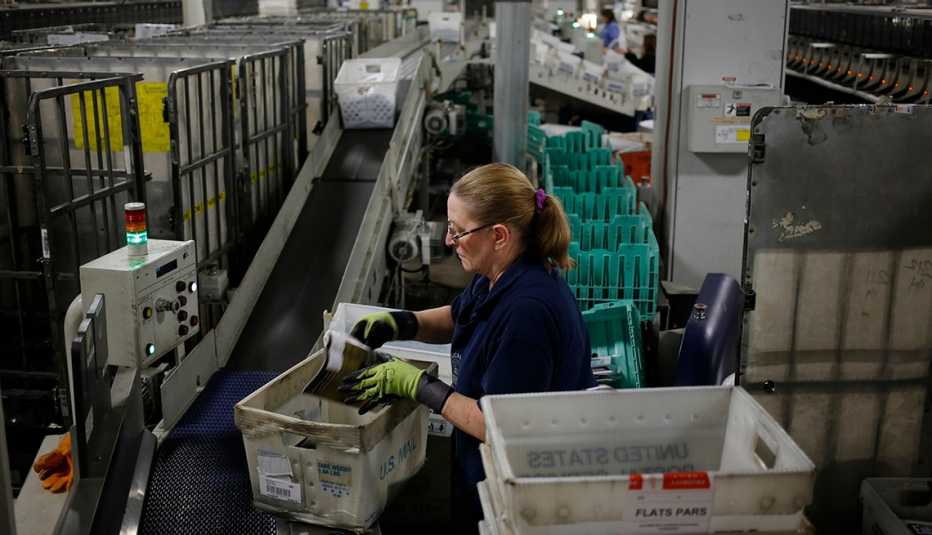AARP Hearing Center


The COVID-19 pandemic has had a devastating effect on the nation's workforce, with unprecedented levels of unemployment leaving millions of people without a job in the middle of a public health crisis. When — and if — those jobs will return is the question on everyone's mind. And for some fields that already were shrinking before the recession, the prospects look even worse now.
During the week that ended Aug. 15, more than 1.1 million people filed a new claim for unemployment. In July, the unemployment rate for workers age 55 and older was 8.8 percent and the overall unemployment rate was 10.2 percent.
Many of the jobs lost this spring and summer resulted from the mandatory temporary shutdowns of restaurants, theaters, stores, gyms and other businesses deemed nonessential. It's difficult to know if those jobs will return because much will depend on communities successfully containing the spread of the coronavirus. But the U.S. Bureau of Labor Statistics (BLS) recently analyzed their data to determine which jobs are projected to face big job losses over the next eight years.
The following fields are expected to face double-digit job losses, suggesting that some of them could disappear in the not-too-distant future (some figures have been rounded):
1. Locomotive firers
2018 workers: 500
2028 projection: 200
Projected drop (2018-2028): 68.3 percent
Average annual pay: $63,750
Not many people are working in these jobs to begin with, so each lost job has a big impact. Locomotive firers are responsible for monitoring train signals and tracks to ensure that the train is traveling safely. But improved technology has reduced the need for a person to perform this duty.
2. Respiratory therapy technicians
2018 workers: 9,300
2028 projection: 3,900
Projected drop (2018-2028): 57.5 percent
Average annual pay: $50,900
The work these technicians do — monitoring and using ventilators and other oxygen devices to help with the treatments of patients in emergency rooms and intensive care units, among other places — has been essential and heroic during the COVID-19 pandemic. Nevertheless, the number of jobs with this title is expected to shrink. Some of these technicians likely will move up into roles as respiratory therapists, a position that offers higher pay and is projected to grow by 21 percent by 2028.
3. Parking enforcement workers
2018 workers: 8,600
2028 projection: 5,400
Projected drop (2018-2028): 36.7 percent
Average annual pay: $40,920
If you've ever been given a parking ticket, you might think these workers are lurking around every corner. But according to BLS projections, the number of these workers on the streets will drop by more than a third over the next eight years.
4. Word processors and typists
2018 workers: 60,400
2028 projection: 40,000
Projected drop (2018-2028): 33.8 percent
Average annual pay: $40,340
These workers fill a number of clerical duties around the office, such as typing reports and letters, and filing and storing digital documents. These tasks will still need to be done in some form, but the occupation itself is disappearing as other employees pick up these responsibilities.
5. Watch repairers
2018 workers: 3,000
2028 projection: 2,100
Projected drop (2018-2028): 29.6 percent
Average annual pay: $42,520
The soaring market in timepieces today is smartwatches you can use to make phone calls, read text messages and run dozens of digital apps. Sales of these devices could grow to $96 billion over the next seven years. Unfortunately, it doesn't look like the watch repairers who specialize in fixing the more traditional mechanical timepieces will get to be a part of that boom.
6. Motor vehicle electronic equipment installers and repairers
2018 workers: 11,000
2028 projection: 7,900
Projected drop (2018-2028): 28.6 percent
Average annual pay: $37,380
These workers install and fix the GPS navigation systems, sound systems and video screens that let you see what's behind your SUV when you back-up. These features are more popular than ever, which means that what were once expensive add-ons now come pre-installed and require less servicing. That also means less work for these specialists.
7. Telephone operators
2018 workers: 5,700
2028 projection: 4,100
Projected drop (2018-2028): 28.4 percent
Average annual pay: $35,750
Digital automation continues to shrink the job opportunities in this one-time iconic field. Callers are more likely to ask Siri rather than a human operator for help finding a phone number. When AT&T broke up in 1984, it employed 40,000 operators.
8. Cutters and trimmers
2018 workers: 10,700
2028 projection: 7,700
Projected drop (2018-2028): 28.4 percent
Average annual pay: $30,200
The products you buy in stores weren't always so perfectly shaped. At various points in the assembly process, a cutter or trimmer may have manually intervened to smooth the rough edges and cut the loose strings. But as manufacturing technologies become more advanced, the need for these types of workers is shrinking.
9. Postmasters and mail superintendents
2018 workers: 13,300
2028 projection: 9,600
Projected drop (2018-2028): 27.5 percent
Average annual pay: $76,900
The United States Postal Service has survived for 245 years, but that doesn't mean it's immune to changes in society. As more people, companies and advertisers communicate via email and other digital options, the USPS has seen its mail volume decline significantly since 2015. That means less job security for postmasters and mail superintendents.































































More on work
8 Part-Time Jobs Retirees Can Do From Home
These remote positions are popular among workers over 55
15 Work From Home Jobs That Are Hiring Now
The number of remote opportunities continues to increaseTop 25 Part-Time Jobs for Retirees
Whether you need the money or just want to stay active, there’s a great job for you